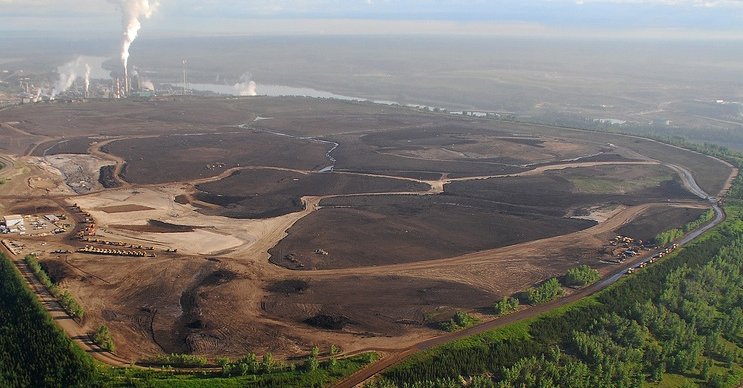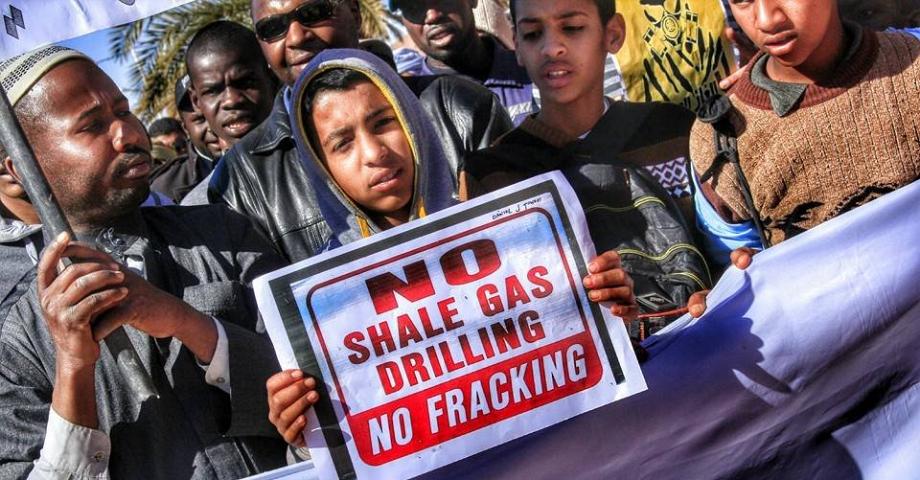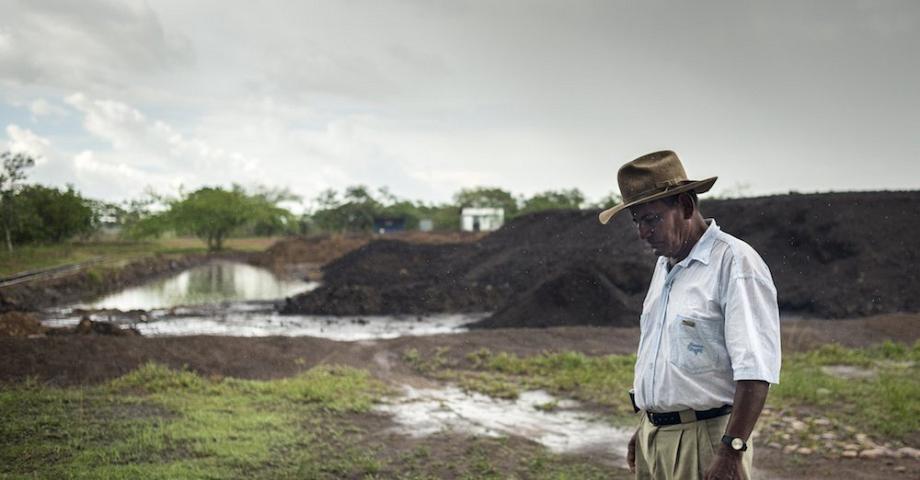When I first approached Bob Cameron about Royal Dutch Shell’s plan to build an environmentally friendly oil sands plant at Carmon Creek not far from where he lives in northwestern Alberta, he had to cut short the conversation because he was taking care of a neighbour’s house, pets and horses. Cameron is 65 years old. He was born in Alberta, and he has been living in the Peace River region of that province in Canada for most of his life. The white beard, the baseball hat and the blue jeans he often wears makes him look like the fisheries technician and the forester he once was before establishing the one-person mobile sawmill company he has been operating for the past 25 years.
Like many of his neighbours, some of whom work in the oil and natural gas industry, Cameron is actively involved in the community. In his spare time, he acts as chairman for the Mighty Peace Watershed Alliance, a multi-sector, not-for-profit society committed to planning for an ecologically sustainable lake and river system while ensuring economic and social stability. The Alliance is not remotely radical like Greenpeace. The government of Alberta recently designated his organization as the official Watershed Planning and Advisory Council (WPAC) for the Peace/Slave River Basin under the government’s Water for Life Strategy.
“Wild West” Mentality
To suggest that Cameron and his neighbours in the region are concerned about the future of the Peace River watershed, which drains into the Peace Athabasca delta, Great Slave Lake, the Mackenzie River and the Mackenzie delta in the Canadian Arctic, would be an understatement. Over the past several years, they have addressed local and provincial governments, the energy industry, and government’s energy regulator (Alberta Energy Regulator) to listen to their concerns about the “wild west” mentality that prevails in the oil sands and hydraulic fracturing (fracking) industries in the region. They are convinced that the region’s rivers, lakes and groundwater will dry out or become polluted if this overuse and abuse of water is allowed to continue.
No one in government, or the regulatory system in Canada, however, is willing to ground-truth the claims that oil and gas companies are making about the amount of water they are diverting and contaminating. And no one, it seems, is evaluating the cumulative impacts that all of these energy developments will have on the rivers and lakes in this part of the world.
“People here are concerned,” Cameron told me when we talked again a few days later. “And they aren’t operating in a location away from the action like the folks at the Alberta Energy Regulator are in their nine story office building in downtown Calgary. They have neighbours and acquaintances who tell them what’s really going on and it isn’t going according to the way the nice words on paper say it is supposed to be.”
The oil and gas industry’s thirst for water
Oil sands developments and fracking for shale gas, oil and coalbed methane are the fastest growing industries in western Canada. The oil sands have proven reserves of 168 billion barrels, making them the third-largest proven crude oil reserve in the world, after Saudi Arabia and Venezuela. According to the Alberta Geological Survey (AGS), there are 15 prospective shale gas formations in the province, five of which may contain up to 1,291 trillion cubic feet (TcF) of shale gas. That’s more than enough gas to heat every home in Canada for a decade.
Extracting these unconventional reserves of oil and gas and coalbed methane is extremely profitable for multinational oil sands companies such as Total, Suncor, and Syncrude, and for waste and water treatment giants like Veolia. But it comes at price to the environment.
Oil sands not only emit greenhouse gases that contribute to global warming, they use a tremendous amount of water to separate bitumen from the sand. For every barrel of oil mined from bitumen deposits, at least 2.6 barrels of water are withdrawn from rivers, lakes or from groundwater aquifers. For in situ operations, where steam is used to separate the oil from the sand below and pump the bitumen to the surface, freshwater use is less, but still significant.
Hydraulic fracturing is also thirsty business. Depending on geology and how deep a frack must be, as much as 60,000 cubic metres of water is mixed with sand and toxic chemicals before it is injected into shale formations at high pressure during the star-up phase, which can last for several days. This shatters the rock so that pockets of natural gas, oil or condensates such as benzene, toluene, xylenes and ethylbenzene can escape from below. Many of these shale deposits also contain significant amounts of carbon dioxide, hydrogen sulfide and in some cases, radioactive materials that can migrate to the surface during the drilling process.
Best Practice?
At Carmon Creek, Shell plans to extract the bitumen with a technology known as Steam Assisted Gravity Drainage (SAGD). Although it requires less water than mining and some other in situ technologies, it still requires approximately a half-barrel of water to produce a barrel of oil. Shell plans to produce 80,000 barrels a day at Carmon Creek.
Shell’s water conservation strategy at Carmon Creek looks very good on paper. When Shell awarded the contract to the French company Veolia in 2014, Antoine Frérot, Chairman and CEO of Veolia Environnement, claimed that the water co-produced with the oil recovered from underground will be treated and re-used to generate the steam that is necessary to inject in the ground. This approach, he stated, maximizes the amount of process water recycled to approximately 99 per cent.
Shell and Veolia aren’t the only companies making environmentally friendly claims such as this. According to the Canadian Association Petroleum Producers, a lobby group that promotes the interests of the energy industry in Canada, oil sands operations already recycle 80 to 95 per cent of the water they use.
“It isn’t going the way it is supposed to be”
Canadian scientist Karlis Muelenbachs, a geochemist and a leading authority on identifying the unique carbon fingerprint or isotopes of shale and conventional gases, suggests that the public should be very careful in interpreting what this really means.
“One rarely recovers half of the water used in steam injection to so called “thief zones -” fractured, cavernous or highly permeable underground formations,” he explained.
“Are they (Shell/Veolia), for example, claiming that they can recover 99 per cent of all the water that is injected into the ground? Or is it that 99 per cent of the water which returns with the bitumen (discounting the water lost to thief zones, leaks etc)? Or is it 99 per cent of the water used on site (surface plus underground)? . . This is outside my circle of knowledge, but 99 per cent recovery and recycle of water from a steam injection plant seems impossible.”
Bill Donahue is a lawyer, scientist, and director of Science and Policy for Water Matters, an independent non-government organization with expertise and resources to address watershed issues in Alberta.
He and colleague Julia Ko recently wrote a report that challenges the claims that oil sands companies make about water use and recycling.
“In many cases, claims are made that up to 95 per cent of water used is recycled,” said Donahue. “However, these calculated recycle rates are based on how much non-saline water is used (i.e., fresh water that is of similar quality to that found in lakes and rivers), and do not consider the amount of saline water used in the total mix of fresh and saline water.”
“Oil sands companies can just decide to change their minds”
Another problem, he says, is that saline groundwater that companies like Shell are pumping out of aquifers to produce steam is largely unmonitored and its use unaccounted for in the oil sands region.
“In situ oil sands operations could augment their operations with substantial amounts of saline water that is neither recycled nor accounted for and still report a 95 per cent recycle rate for water use. For this reason, total water use and recycling by in situ oil sands operations remain hard to quantify, and the potential for over-exploitation of saline groundwater is significant. Rather than using the calculated recycle rate, we advise that the make-up rate be used instead to characterize water use by in situ projects, because it reflects the total amount of water (saline and non-saline) consumed by steam production and losses in the bitumen-bearing formations, and other on- site uses or disposal.”
According to Donahue, it is not uncommon for oil sands companies to back away from prior commitments about water use and recycling once they are operational and discover that they do not have enough saline groundwater to produce the steam they need. When this happens, he says, the risk is that they can then apply for a routine administrative change to their water licences. If granted, which is often the case, it would give them the licence to withdraw freshwater from rivers, lakes, streams or other sources. By doing this, a company could break their earlier promise to not use freshwater that may have resulted in the project approval, and then simply change their mind without having to face the opposition that they would have faced if they’d initially proposed to use freshwater.
Robin Gervais is a councilor for the local government in Fox Creek, which depends heavily on the energy industry for jobs and taxes. As much as he appreciates the revenue the industry brings to the region, he is unhappy with the current situation, the lack of transparency and the “wild west” mentality that prevails over the use of water resources and fracking practices.
Impunity
Gervais has taken photos of fracking companies pumping water out of fish-bearing streams that have almost run dry. He keeps a record of the growing number of earthquakes that some scientists say are connected to fracking operations. Increasingly, many of these earthquakes come in swarms of 15 of 20.
Gervais is also not alone in wondering whether anything will change for the better when the chairman of the government’s energy regulator, which is supposed to “ensure the safe, orderly and environmentally responsible development” of energy resources in Alberta, is a founding member of the Canadian Association of Petroleum Producers (Gerry Protti also worked for energy companies such as Encana Corporation, PanCanadian Energy, PanCanadian Petroleum and Cenovus before the provincial government of Alberta appointed him to the position.)
Cumulative Impacts
Bob Cameron acknowledges that Shell, Veolia and perhaps some other companies may prove to be much better at conserving and recycling water than other companies currently operating in the region. The technology they are using is proven and it is costly, although no one will say how much more it will cost. The problem, he says, is that they will be taking water out of a river and lake system that is already being heavily exploited by other energy companies such as Chevron, Encana, and Talisman that are operating in the region, and at a time when the province of British Columbia is experiencing a shale gas boom that is even bigger. Upstream along the Peace River in British Columbia, for example, the provincial government has provided energy companies with the right to withdraw approximately 78 million cubic metres of water from the watershed each year on short-term permits. That’s equal to the amount of water that would be needed to fill 31,000 Olympic swimming pools each year.
“An interesting counterpoint to Carmon Creek is located just 150km south near Fox Creek where Shell is applying to divert up to 5 million cubic meters of freshwater from Iosegun Lake to hydraulically fracture the Duvernay shale formation,” says Cameron. “Add to that 5 million cubic metres of water that EnCana is withdrawing, the 1.5 million that Chevron is withdrawing, the millions of cubic metres that water that Talisman and other companies are withdrawing and you start to see the big picture. In most cases, this water will be contaminated and then disposed of by deep well injection removing it from the water cycle for millennia”.
Accidents
Fears that groundwater and rivers that feed into the Peace River watershed may be become polluted have been reinforced by several fracking and oil sands operations that recently went wrong in Alberta. In 2009/2010, for example, it took Canadian Natural Resources $50 million and nearly 18 months to cap a continuing series of spills that were caused by a form of fracking — steam injection in this case — at one of its wells. More than a million litres of bitumen seeped into a lake and adjoining wetlands in what has turned out to be the fourth largest spill in Alberta history. Hundred of birds and animals died, and valuable wetlands were destroyed.
In September 2010, a Shell employee accidently dug into a high pressure saline aquifer at the company’s Muskeg River oil sands operation. When the salty water started bubbling up at a rate of 2,000 cubic metres every hour, there were fears that it would eventually spill over into the Athabasca River and poison fish and other freshwater life.
Whether it’s in situ oil or mined oil sands development, the Shell Muskeg Mine incident highlights again the need for the Government of Alberta to commit resources to fully mapping and understanding groundwater resources in the oil sands region, according to Julia Ko. “There is limited understanding of the detailed hydrology and geology in the oil sands region, impacts of regional development on groundwater, or how much groundwater can be withdrawn without causing harm.”
Cameron believes it’s time for some transparency in a regulatory system that makes it almost impossible for even informed people such as him to keep track of the amount of water that is being withdrawn from lakes, rivers and underground aquifers and the amount of water that is being polluted.
“We can no longer afford just giving water away as we’re doing now,” he says. “The Alberta Energy Regular can run for cover as they are doing now when questions are raised, but if this continues, some of our lakes and streams will go dry and our water will be polluted.”
Edward Struzik
Read the first part of Edward Struzik’s report on oil sands and water : In Alberta and downstream, the heavy toll of the oil sands industry on water and the environment
—
Photo : Kris Krug CC




